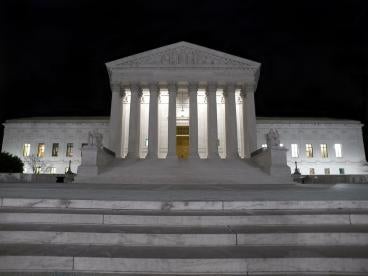The Supreme Court made clear today that the filing period for a constructive-discharge claim begins to run when the employee gives notice of his or her resignation. In a 7-to-1 decision, the Court favored the five-circuit majority who recognized such timeline and rejected the Tenth Circuit’s reasoning that the clock begins to run on the date of the “last discriminatory act.” Green v. Brennan, 578 U.S. ___, (2016). Although the case involved a federal employee, the Court noted that the Equal Employment Opportunity Commission (EEOC) treats federal and private sector employee limitations periods the same so this ruling should affect constructive-discharge claims against private employers as well.
Discriminatory Act That Triggers Limitations Clock
In the case before the Court, Marvin Green, a postmaster in Colorado, claimed he was denied a promotion because of his race. A year after that matter was settled, Green filed an informal EEO charge with the Postal Service alleging that he was subjected to retaliation for his prior EEO activity due to his supervisor threatening, demeaning, and harassing him. After the Postal Service’s EEO Office completed its investigation of his allegations, he was informed he could file a formal charge, but he failed to do to.
A few months later, Green was investigated for multiple infractions, including improper handling of employee grievances, delaying the mail, and sexual harassment of a female employee. Green was placed on unpaid leave during the investigation. Federal agents quickly concluded that Green had not intentionally delayed mail, but neither Green nor his union representative was told. Instead, the Postal Service began negotiating with Green’s union representative to settle all the issues against Green, resulting in Green signing a settlement agreement in December 2009 that included giving up his postmaster position. On February 9, 2010, Green submitted his resignation which was to be effective March 31.
During that time, Green filed multiple charges with the Postal Service’s EEO Office. By regulation, federal employees must contact an equal employment opportunity officer in their agency within 45 days of “the date of the matter alleged to be discriminatory” before bringing suit under Title VII. Green’s allegations included that he had been constructively discharged by being forced to retire.
Green eventually sued the Postal Service in federal court in Denver. The district court dismissed Green’s constructive discharge claim, ruling that he had not contacted an EEO counselor about his constructive-discharge claim within 45 days of the date he signed the settlement agreement in December. On appeal to the Tenth Circuit Court of Appeals, Green argued that the 45-day limitations period did not begin to run until he announced his resignation, even though that was months after the last alleged discriminatory act against him. The Tenth Circuit disagreed with Green, ruling that the clock began to run on the date of the “last discriminatory act” giving rise to the constructive discharge, as two other circuits have held.
Limitations Period Begins When Employee Gives Notice of Resignation
On appeal to the Supreme Court, Green asserted that the statute of limitations began when he actually resigned due to constructive discharge, the act that gave rise to his cause of action, which was consistent with the rulings of numerous other Courts of Appeals. Interestingly, the Court agreed with the position taken by the Postal Service, which was different from the Tenth Circuit’s decision, ruling that the limitations period for a constructive-discharge claim begins to run when the employee gives notice of his resignation.
In an opinion written by Justice Sotomayor, the Court explained that “the ‘matter alleged to be discriminatory’ in a constructive-discharge claim necessarily includes the employee’s resignation.” The Court noted that to the “standard rule” governing statutes of limitations, the “limitations period commences when the plaintiff has a complete and present cause of action.” It means that period begins when the plaintiff “can file suit and obtain relief.” In effect, a constructive-discharge claim is like a wrongful-discharge claim which accrues only after the employee is fired. With nothing in Title VII or its regulations to the contrary, the Court therefore found that the limitations period should not begin to run until after the discharge itself.
So precisely when does an employee resign for purposes of triggering the limitations period for a constructive-discharge claim? The Court ruled that the limitations period begins on the day the employee tells his employer of his resignation, not the employee’s actual last day of work.
The Court did not decide the factual question of when Green actually gave notice of his resignation to the Postal Service, sending the matter back to the Tenth Circuit to determine that fact.
Significance of Decision for Employers
The practical effect of the Court’s ruling is to extend the period in which an employee may allege a constructive discharge beyond the limitations period for the underlying discriminatory acts that gave rise to the resignation. Hypothetically, employees who resign may be able to bootstrap any alleged discriminatory act during the course of their employment to their decision to abandon employment. In his dissent, Justice Thomas further opined that a discrimination victim may extend the limitations period indefinitely simply by waiting to resign. Yet the Court believed such concerns to be overblown, doubting that a victim of employment discrimination would continue to work under intolerable conditions only to extend the limitations period for a constructive-discharge claim. Nonetheless, even if the applicable Title VII limitation period (typically 180 or 300 days for private employers) for the underlying discrimination has passed, an employee may still have a timely claim for constructive discharge under the Court’s rule.
Time will tell if Justice Thomas’s concerns were more realistic that his colleagues believed.



 i
i


